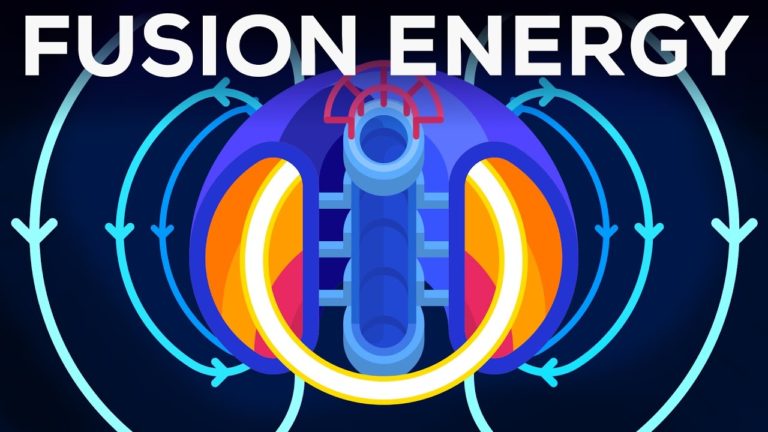Fusion Power Explained – Future or Failure
What is Fusion Power ?

Fusion power is an experimental form of power generation that generates heat used to boil water, produce steam, and spin magnets through copper to produce electricity by using nuclear fusion reactions. In a fusion process, two extremely light atomic nuclei combine to form a heavier nucleus, while releasing energy. Devices that produce energy in this way are known as fusion reactors. By contrast, current nuclear reactors release energy by splitting extremely heavy atoms (nuclear fission reactions).
Fusion occurs in a plasma confined at sufficient temperature and pressure for a sufficient time. The combination of these constraints is known as the Lawson criterion. Higher values for one element permit lower values in the others.
In stars, the most common fuel is hydrogen, the lightest atom, and gravity provides the long confinement times and high pressure required. The power produced by the fused nuclei sustain the necessary temperature to keep the reaction going, and the size and density of the star’s core prevents rapid energy loss and cooling. Proposed reactors generally use hydrogen isotopes such as deuterium and tritium (or a mixture of the two), which react more easily and allows them to reach the Lawson criterion at more attainable temperatures and pressures.
As a source of power, nuclear fusion is expected to have many advantages over fission. These include greatly reduced radioactivity in operation and little high-level nuclear waste, ample fuel supplies, and greatly increased safety. For example, fusion reactors use only a tiny amount of fuel and cannot produce runaway reactions.
Research into fusion reactors began in the 1940s. Reactor efficiency has steadily improved, but to date no design has met the Lawson criteria to the needed standard. Current research reactors require more power to operate than they produce in output and can only maintain fusion for a limited time. Major research hurdles have included plasma control, material embrittlement, and energy extraction. The plasma is chaotic and must be confined and compressed with great precision to prevent plasma loss and maintain a reaction, a requirement whose complexity is still being explored through many varied approaches. Plasma-facing materials and their periodic replacement (if needed) requires considerable research, because most fusion designs produce a stream of energetic neutrons that over time degrade the materials used in the reaction chamber. Finally, energy must be extracted from the reaction container without disrupting the reaction. These problems are much better understood now than they were originally, and current research reactors such as ITER (under construction) are expected to demonstrate that, to a great extent, many of these problems can be overcome, and allow testing of technologies needed to create a prototype commercial reactor from around 2050.
Fusion researchers have investigated many confinement concepts. The early emphasis was on the z-pinch, stellarator, and magnetic mirror. Later the tokamak and inertial confinement took the lead. Both designs are under research at large scales, notably the ITER tokamak in France, and the National Ignition Facility (NIF) laser in the United States. Researchers are also studying other designs that may offer cheaper approaches. Among these alternatives, there is increasing interest in magnetized target fusion, inertial electrostatic confinement, and new variations of the stellarator.
How does Fusion Energy work and is it a good idea?
Do not forget to share your opinion with us to provide you with the best posts !




0 Comments